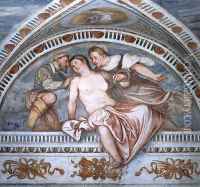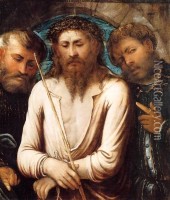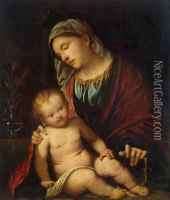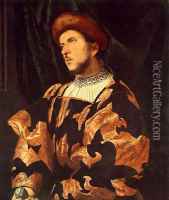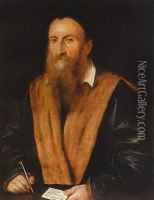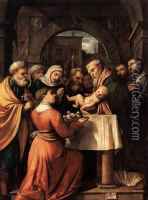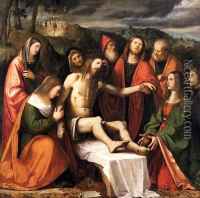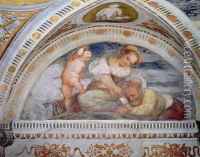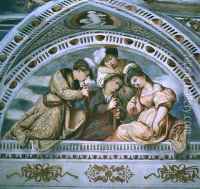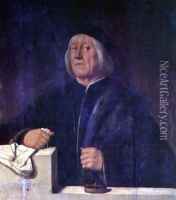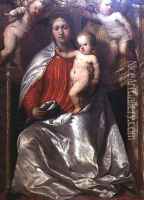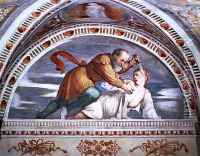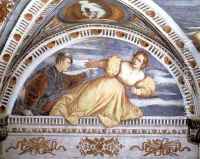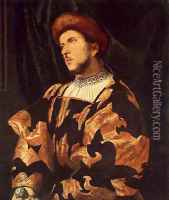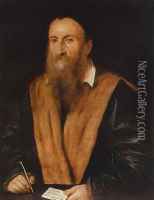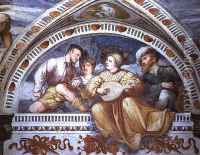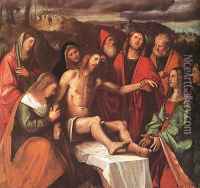Gerolamo Romanino Paintings
Gerolamo Romanino was an Italian High Renaissance painter, who was known for his robust characters and use of vivid colors. Born around 1484 or 1485 in Brescia, Lombardy, he was deeply influenced by the Venetian school, particularly the works of Titian and Giorgione. Romanino's style, however, was distinctive for its vitality and expressive realism, often characterized by strong chiaroscuro and a preference for earthy, rich tones.
Romanino started his career working in Brescia and soon became known for his frescoes and altarpieces. His early works display a certain adherence to the Brescian tradition, evident in the detailed landscapes and the delicate treatment of figures. One of his significant early commissions was the frescoes in the Chapel of St. Joseph in the church of San Francesco in Brescia, which he completed around 1510. These works already displayed his characteristic use of color and a dynamic approach to composition.
In the 1520s, Romanino worked in Trento, where he executed one of his masterpieces, the fresco cycle in the Castello del Buonconsiglio. These frescoes depict scenes from the life of the classical hero, Antenor, and are notable for their lively storytelling and the realistic portrayal of figures in contemporary dress. This work firmly established Romanino as a master of the fresco technique and narrative art.
Returning to Brescia, he continued to receive important commissions. In the 1530s, he painted a series of works for the church of Santa Maria della Neve in Pisogne, showcasing his mature style that combines elements of the High Renaissance with more provincial, expressive qualities. His later works often featured more somber tones and a contemplative mood, reflecting the changing artistic tastes of the period.
Romanino's influence extended beyond painting, as he also provided designs for tapestries and stained glass. Despite his success, his later life was not without controversy; in 1554, he was imprisoned for a short time for undisclosed reasons, an event that may have impacted his later works.
Gerolamo Romanino died in 1560, leaving behind a body of work that has been appreciated for its unique blend of Renaissance ideals with a more personal, humanist touch. His paintings can be found in various churches and museums, continuing to offer insight into the richness of Renaissance art in northern Italy.
